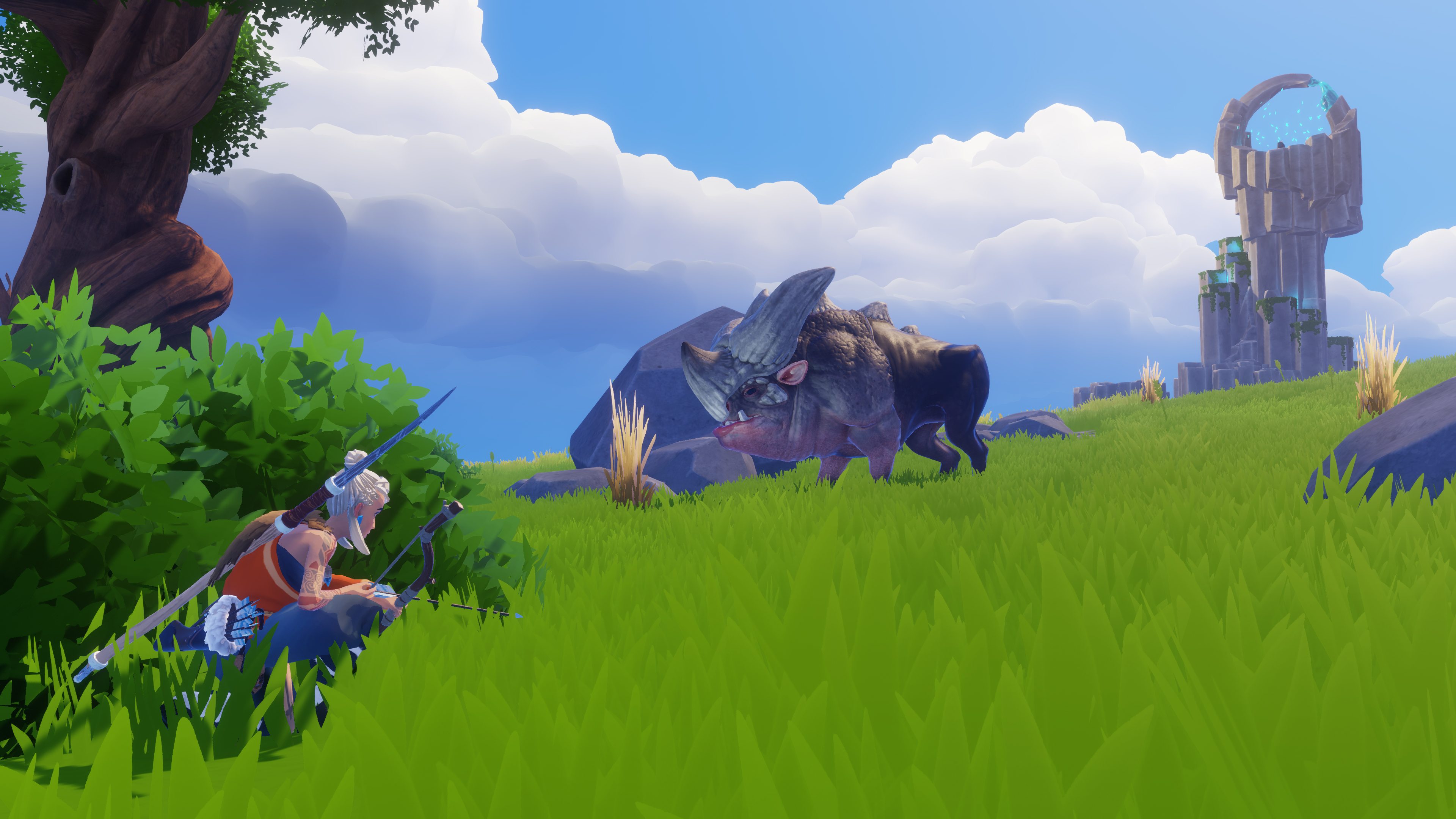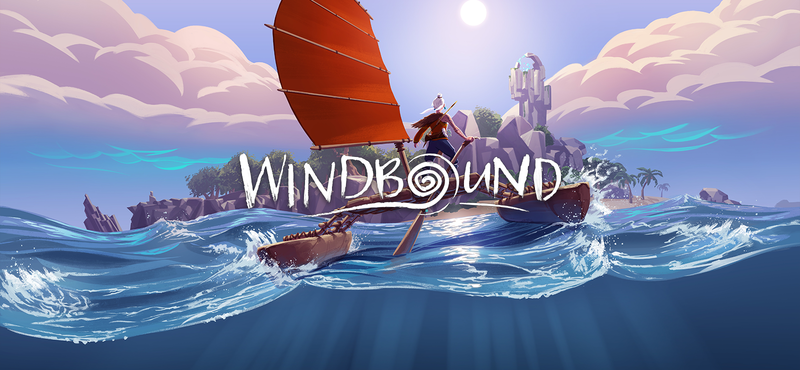

In many ways this is a clumsy, glitchy game, saddled with an awkward crafting menu and controls for sailing and combat that lack any particular sense of impact or intention. By the time you reach the fourth and fifth chapters (out of five total), the game’s ocean presents a much wider range of possibilities for fortune and ruin. Windbound is, in other words, an exploration game whose sense of exploration is painfully rigid, one that sabotages its own sense of discovery by so insistently waiting until you have earned the next mechanic. Only after three more keys will you find the next type of island and the crafting recipes that go with their new resources. The second chapter, while carrying over the plain landmasses from the first, introduces islands marked by red-leafed trees that house the first hostile animal that you’ll encounter (the wild boar in the first chapter don’t attack unprovoked) as well as bamboo, which is sturdier and offers crafting options for more elaborate vessels. The first chapter has only one island type, all with the same handful of resources, like sticks and tufts of grass to cobble together a canoe and a flimsy sail. The decision to segment Windbound into discrete chapters isn’t ruinous on its own the game only spirals into tedium through the slow drip feed of new areas, items, and enemies on a per-chapter basis. Unlike the wider worlds of so many other survival games, the procedurally generated space of Windbound is consciously limited, requiring players to find three towers housing nautilus keys before they can proceed to the game’s next chapter, which has a new chain of islands to explore. Windbound, however, is different insofar as its early and middle hours are an absolute chore, suffering from a mind-numbing lack of variety that’s only rectified once the game is nearly over.Īt the start of Windbound, you must build and paddle a small canoe, but as the game progresses, you construct decks and sails to more smoothly and confidently navigate the waters to distant islands with more resources available to you.

Not only do you have few materials to fall back on should disaster strike, but you’re often still learning the game’s mechanics, from what to craft to what materials to look out for, and what can kill you in a moment’s notice.

The early hours of other such survival games tend to be the most thrilling because that’s when players are at their most desperate and vulnerable. As a warrior separated from her seafaring tribe in Windbound, you’ll have to scavenge small islands for food and craft materials in order to build a boat.


 0 kommentar(er)
0 kommentar(er)
